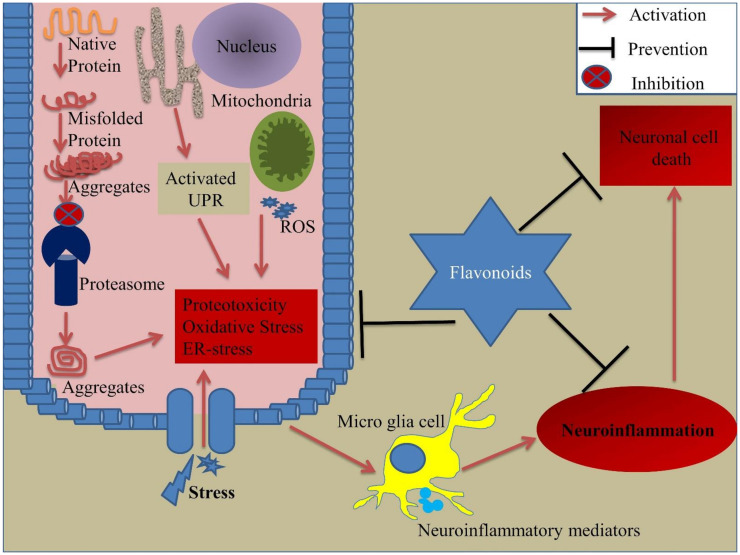Figure 1.
Role of flavonoids in prevention against cellular stress response. Exposure to stress conditions leads to the activation of cellular stress responses, such as UPR, ER stress, oxidative stress, proteotoxicity, and neuroinflammation. When cells are exposed to any stress condition, it affects the cellular proteome, thus inducing the UPR in the ER and further activation of ER stress. Stress conditions also initiate proteotoxicity by affecting the proteins’ structure, as well as proteasome subunits of the proteasomal degradation machinery, causing the release of misfolded/aggregated proteins in the cytosol, thus inducing proteotoxicity. The release of ROS from mitochondria leads to the generation of oxidative stress. All these cellular stress responses try to eliminate the stress-induced toxicity, but extreme cellular stress responses may lead to cell death. During stress exposure, microglia start to release neuroinflammatory mediators thus causing neuroinflammation. This inflammation creates a hostile environment within the cell and under harsh conditions, leads to cell death. Flavonoids have the potential to combat and prevent these exaggerated cellular stress responses in-turn preventing cell death. ER: Endoplasmic reticulum, ROS: Reactive oxygen species, UPR: Unfolded protein response.

